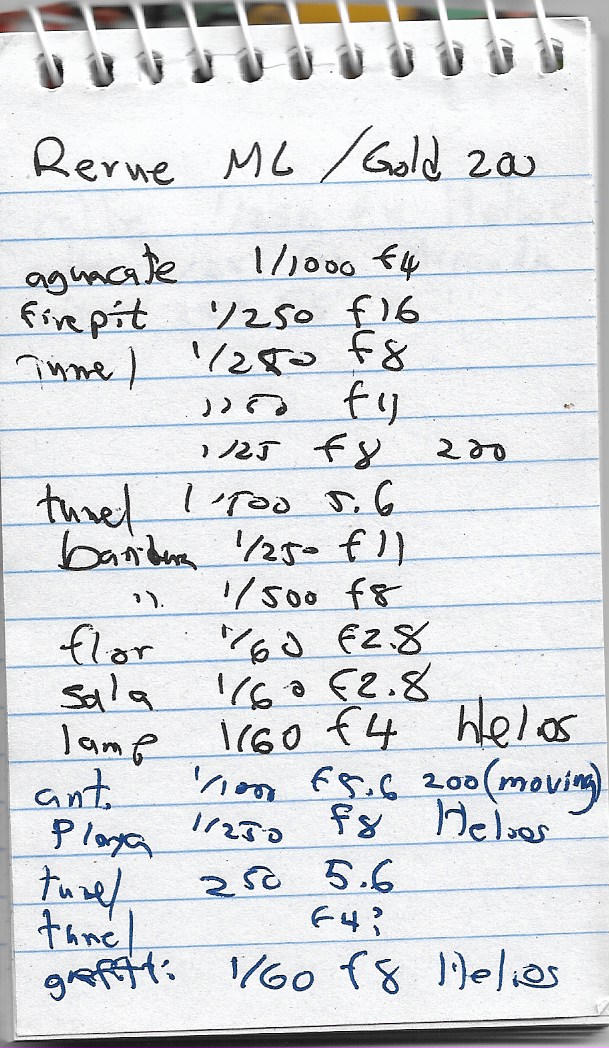 Originally posted by swanlefitte
Originally posted by swanlefitte 
Everybody says to write it down but why? Is this to improve your intuitition? If not why care?
I agree - what's the value of knowing the actual aperture after the fact? Even after 35 years of photography, I don't trust my intuition when it comes to exposure. Yes, the light meter is not always correct. That said, there are light sensors in modern cameras with more pixels than the first digital cameras (or so it seems). When shooting film, you take a meter reading. If you don't trust it, you bracket. There were even some film bodies that could bracket automatically.
These days, I am of the belief that highlights should be preserved in my images. I would rather let the shadows go dark than have blow a highlight. When you get it right, it's just magic. So I take a shot with the meter reading, peep at the histogram and adjust. Afterwards the actual exposure numbers do not matter to me, just the histogram in Darktable. Besides, I will do the same checks next time. Checking the histogram may be tedious, but so is scribbling notes. But each to his own. Those who keep record of their exposures have my blessing.
To illustrate my point, here is one I made earlier.



 Similar Threads
Similar Threads 














 Post #6 by Not a Number
Post #6 by Not a Number








